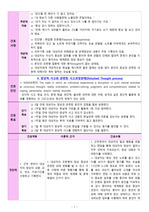Subtle changes in the body were often difficult for us to recognize. In particular, diseases with no clear symptoms in the early stages were more difficult to detect health problems. For example, thyroid tumors were often found by accident while visiting the medical institution for other reasons. If not found in the early stages, early detection was very important as the size of the tumor grew, causing bumps to touch around the neck, visual changes, and even thyroid cancer lymphatic gland metastasis.
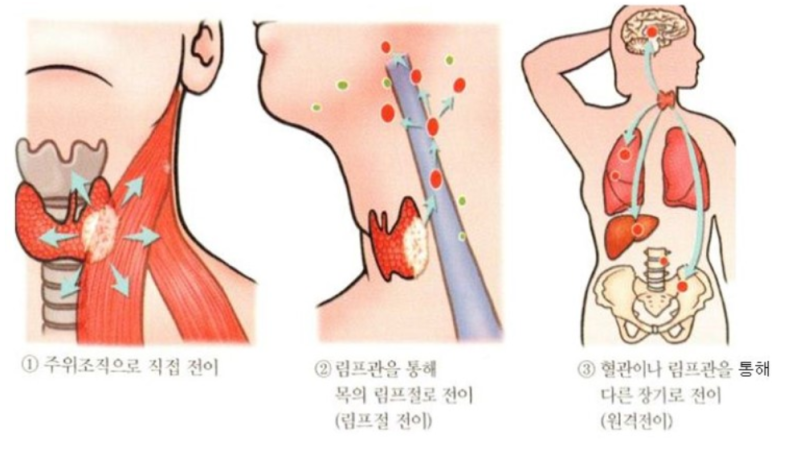
In order to prevent lymphatic metastasis of thyroid cancer, it was essential to detect and treat thyroid cancer early. The thyroid gland is an endocrine organ that plays an important role in energy metabolism, and even a slight problem affected the whole body.

When thyroid tumors were discovered, it was very shocking news for patients and their families if they were found to be cancer. Thyroid cancer has a better prognosis and slower progression than other cancers, but the situation became complicated when metastasis to the lymphatic system occurred.
Thyroid cancer lymphatic metastasis means that cancer cells moved beyond the thyroid gland to other tissues through the lymphatic system, which affected treatment plans and prognosis.
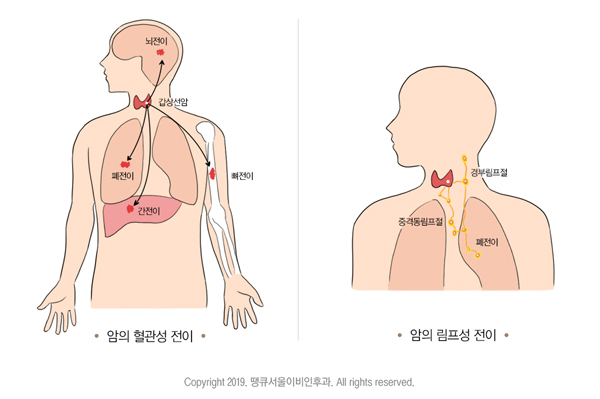
It was important to pay attention to small changes in the body. For example, some patients who underwent surgery for parathyroid dysfunction had a higher incidence of thyroid papilla cancer, which increased the probability of lymphatic metastasis.

Thyroid cancer lymphatic metastasis appeared in many thyroid cancer patients, which further emphasized the importance of treatment. Early treatment was very important because delaying treatment could spread not only to lymph glands but also to distant lungs and bones.
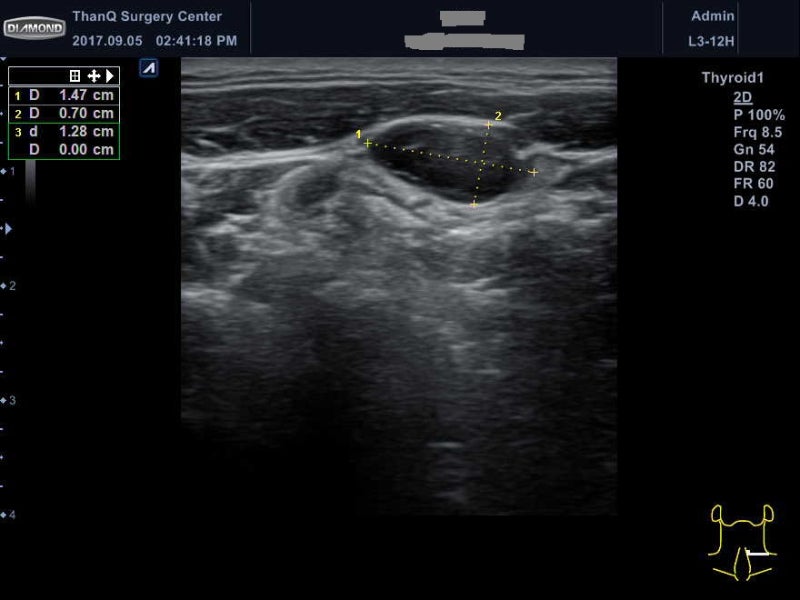
Surgery was one of the widely used methods for treating thyroid cancer. This method of removing some or all of the thyroid gland is a basic treatment, and after surgery, regular tests checked for remaining cancer cells. If necessary, supplementary treatment such as radioiodine therapy and external radiation therapy could proceed further.
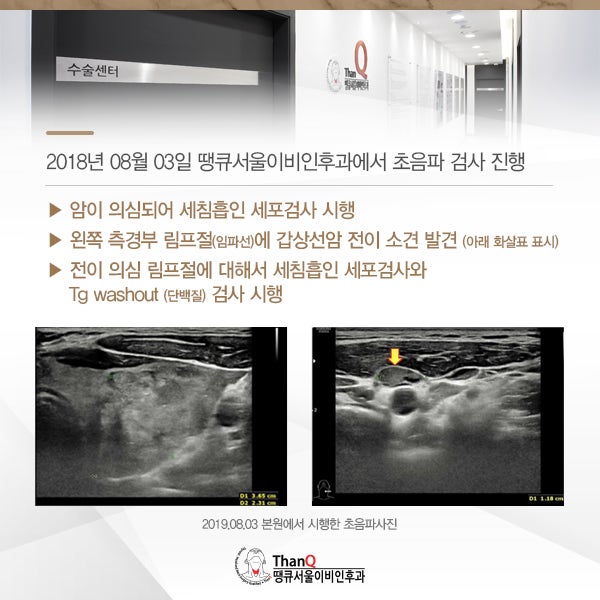
This treatment process could put a lot of pressure on the patient, but if the disease is detected early, the situation can be greatly improved. Thyroid cancer can be improved by management if it is discovered in the early stages, but it was a disease that could be overcome sufficiently even if it was discovered later. As thyroid cancer can spread through the lymphatic system, prevention and early treatment became the central axis of treatment, helping patients recover.

Strategies to combat thyroid cancer were implemented in all directions from the early stages of thyroid tumor detection to the prevention of lymphatic metastasis of thyroid cancer at this medical institution. Maintaining the patient’s healthy immune system and strengthening their physical strength played an important role in these battles.
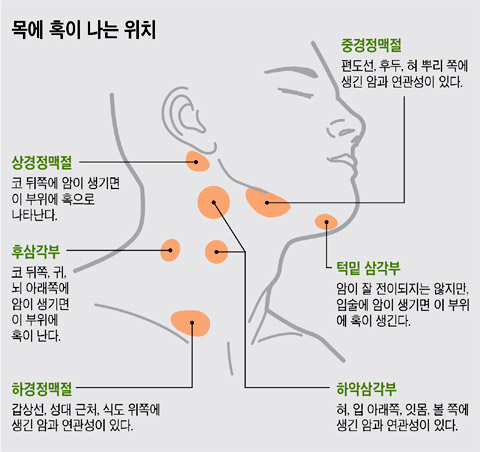
Here, we focused on managing immunity to recover cancer patients. This process was designed to make positive changes to patients’ daily lives beyond simply treating diseases.

The integrated immunotherapy program focused on suppressing cancer progression and strengthening the patient’s natural immune monitoring system. Here, doctors and oriental medicine doctors integrated their respective medical approaches to create a treatment plan tailored to the individual patient’s condition. This method greatly helped patients build a personalized immune system in the process of fighting cancer.Our medical institution is taking an integrated approach between Chinese and modern medicine to cope with thyroid tumors and thyroid cancer lymphadenotransfer. This approach played an important role in minimizing the various complications and aftereffects of surgery. In particular, we focused on managing bleeding, infection, hypothyroidism, and voice changes that can occur after surgery.In this process, we focused on strengthening the patient’s immune system. This was essential for removing the remaining cancer cells and preventing cancer recurrence. Patient management was carried out in a way that covers mental and nutritional aspects beyond physical aspects.Our hospital has made it possible to manage patients in many ways through cooperation between oriental medicine and modern medicine. To that end, we provided a balanced diet considering the patient’s condition and constitution and encouraged healthy eating habits. We also focused on creating a comfortable environment for patients. Through various healing programs, we reduced patient stress and provided emotional support. All of these efforts were aimed at supporting patients from a long-term perspective so that they could return to healthy daily life. Through continuous research and development, we worked hard to provide customized management for patients. In order to respond to the patient’s trust, we continued to take meticulous treatment.Our hospital has made it possible to manage patients in many ways through cooperation between oriental medicine and modern medicine. To that end, we provided a balanced diet considering the patient’s condition and constitution and encouraged healthy eating habits. We also focused on creating a comfortable environment for patients. Through various healing programs, we reduced patient stress and provided emotional support. All of these efforts were aimed at supporting patients from a long-term perspective so that they could return to healthy daily life. Through continuous research and development, we worked hard to provide customized management for patients. In order to respond to the patient’s trust, we continued to take meticulous treatment.Our hospital has made it possible to manage patients in many ways through cooperation between oriental medicine and modern medicine. To that end, we provided a balanced diet considering the patient’s condition and constitution and encouraged healthy eating habits. We also focused on creating a comfortable environment for patients. Through various healing programs, we reduced patient stress and provided emotional support. All of these efforts were aimed at supporting patients from a long-term perspective so that they could return to healthy daily life. Through continuous research and development, we worked hard to provide customized management for patients. In order to respond to the patient’s trust, we continued to take meticulous treatment.Previous image Next imagePrevious image Next imageHere’s the previous image. Here’s the next oneHere’s the previous image. Here’s the next oneHere’s the previous image. Here’s the next one
